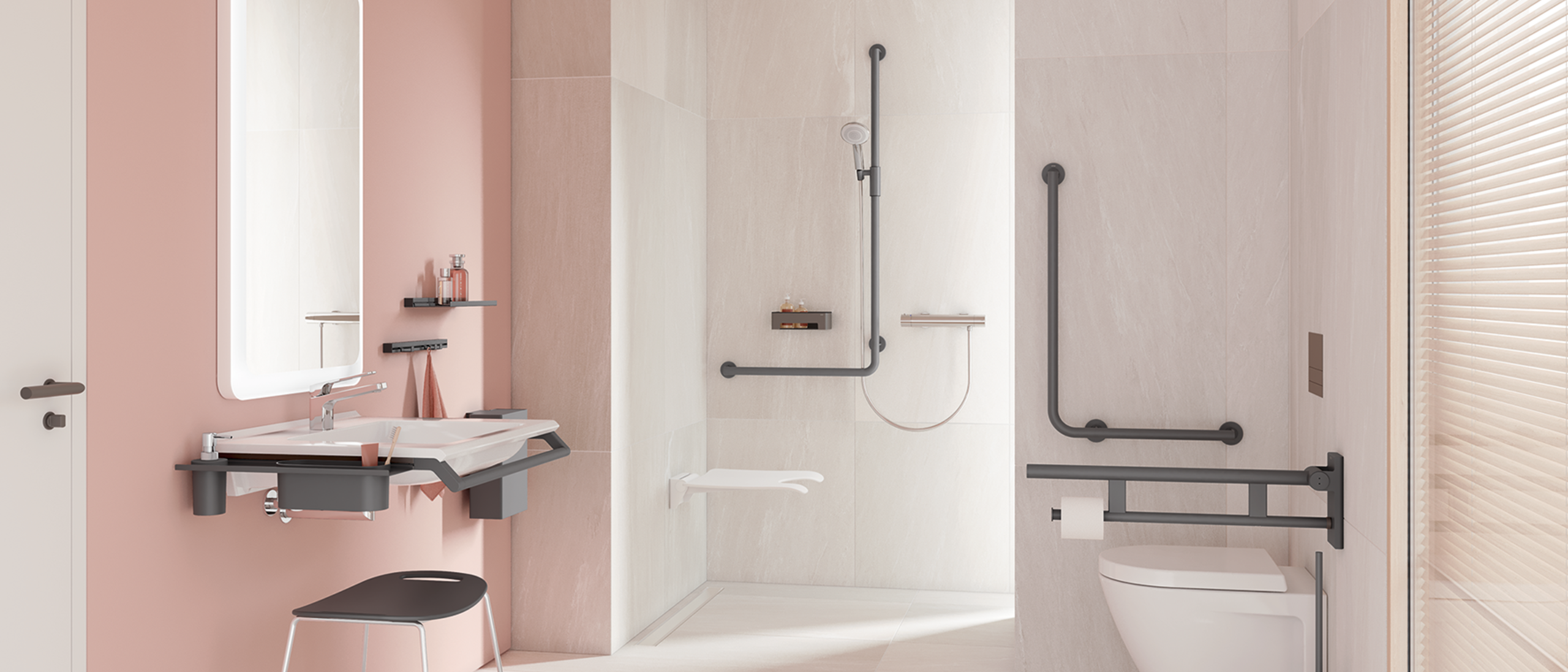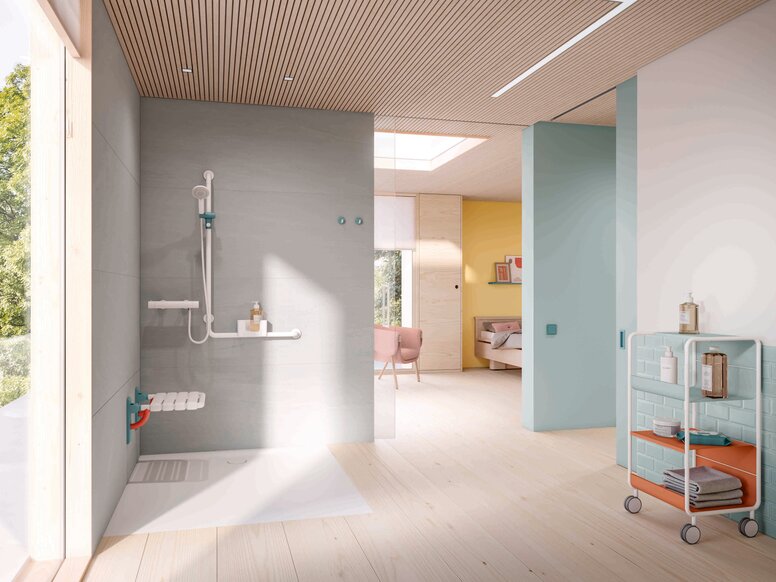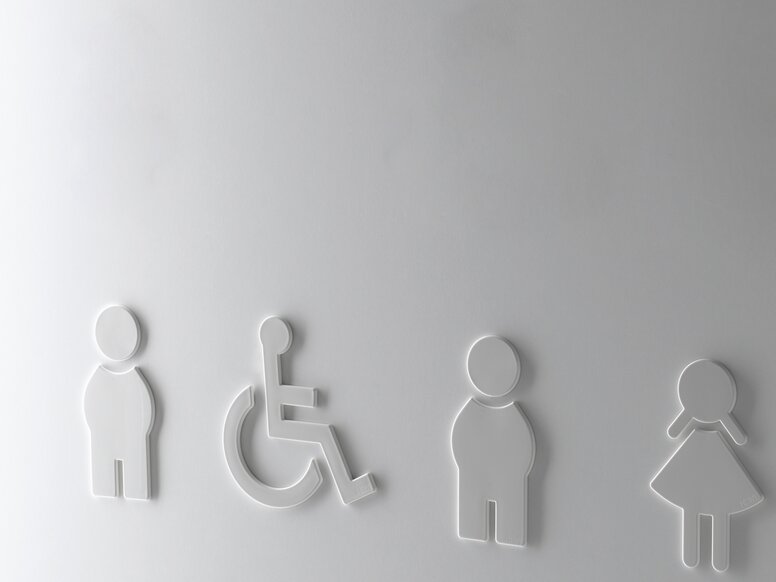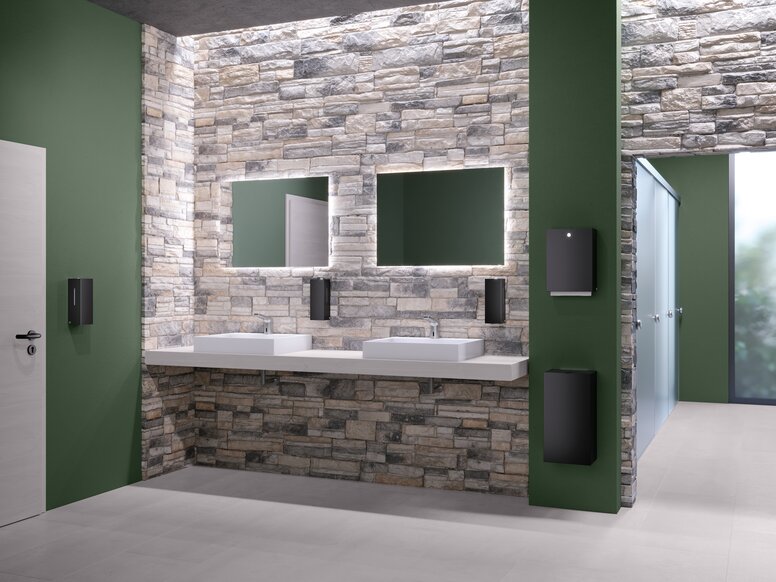HEWI MAG/accessibility
minimalist bathrooms: Principles for more space and accessibility
Find out how minimalist bathroom design is revolutionizing bathroom trends through functionality, sustainability, and innovative technologies and learn about strategies for future-oriented bathroom design that combine design and accessibility – and establish a new standard.
- Seven basic principles of minimalist bathroom design
- Designing inclusive bathrooms with a minimalist approach
- Integrating smart technology into minimalist bathrooms
- Collaborative planning of functional and aesthetic bathrooms
In the world of modern architecture and bathroom design, minimalism is experiencing a remarkable renaissance that goes far beyond mere aesthetic choices. This trend towards greater functionality, adaptability, and sustainability reflects the needs of a diverse society and represents an essential approach for architects, planners, and installers. At a time when the demand for future-proof and environmentally friendly solutions is increasing, the minimalist bathroom design offers an attractive solution that is both contemporary and sustainable.
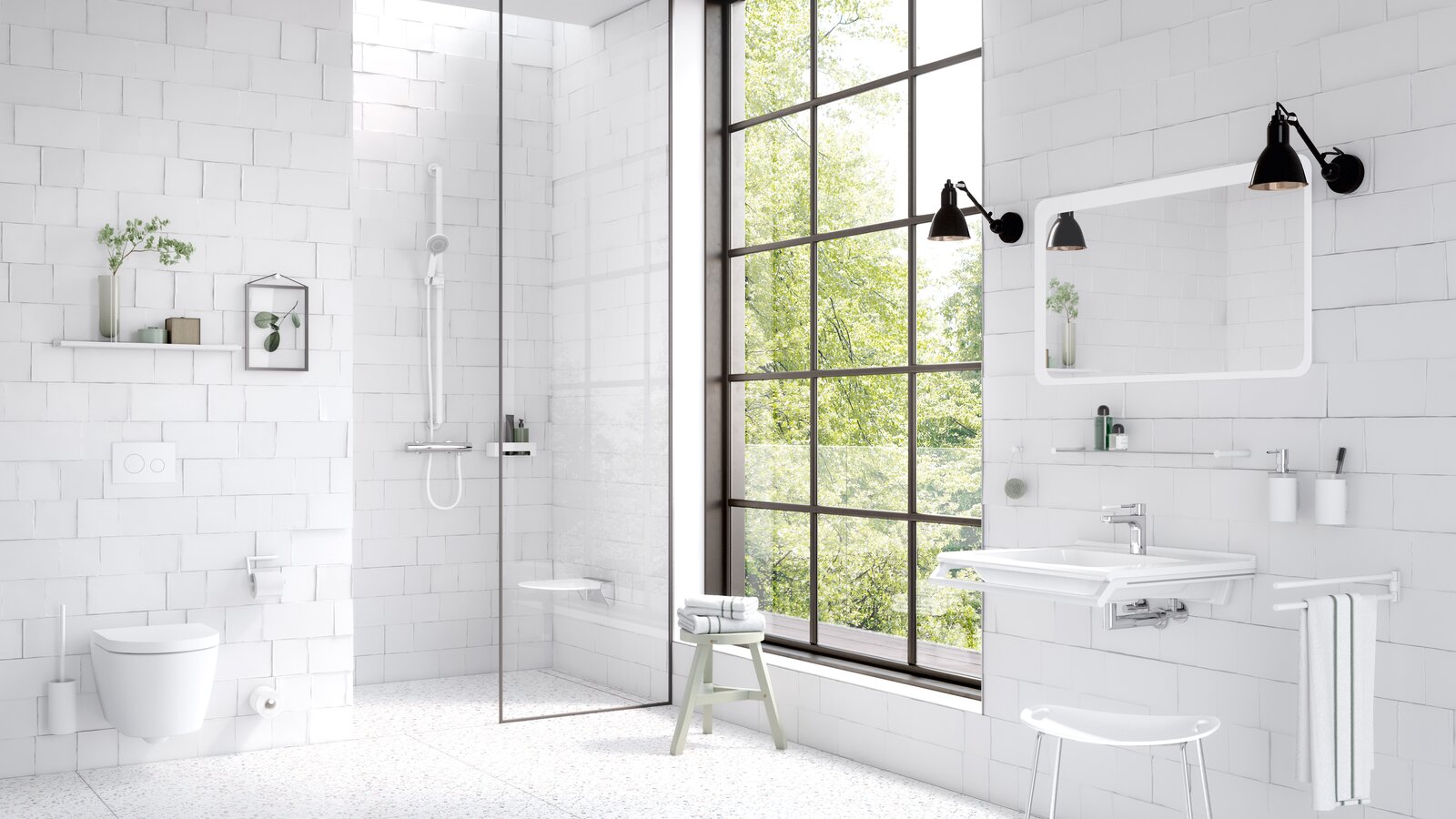
The seven basic principles of minimalist bathroom design
From creating open and calming spaces to integrating sustainable materials and clever use of lighting and color, every element plays a crucial role in the design of a minimalist space. In this section, we look at seven basic principles that form the core of every minimalist bathroom.
- Clear lines and plenty of space: Minimalist design in bathrooms creates not only a visually appealing but also a calming effect that promotes relaxation. By limiting the design to essential elements and clear lines, open and airy spaces that support and simplify daily routines are created.
- Focus on functionality: A minimalist bathroom is designed to be both functional and aesthetic. Well thought-out storage solutions, intelligently positioned fittings, and height-adjustable toilets and washbasins increase user-friendliness and ensure that the space is accessible for people of all ages and abilities. For example, HEWI System 900 makes it easy to design bathrooms that are both minimalist and accessible. With a clean, minimalist design , it offers well thought-out products that are not only practical and durable but also easy to install and keep clean.
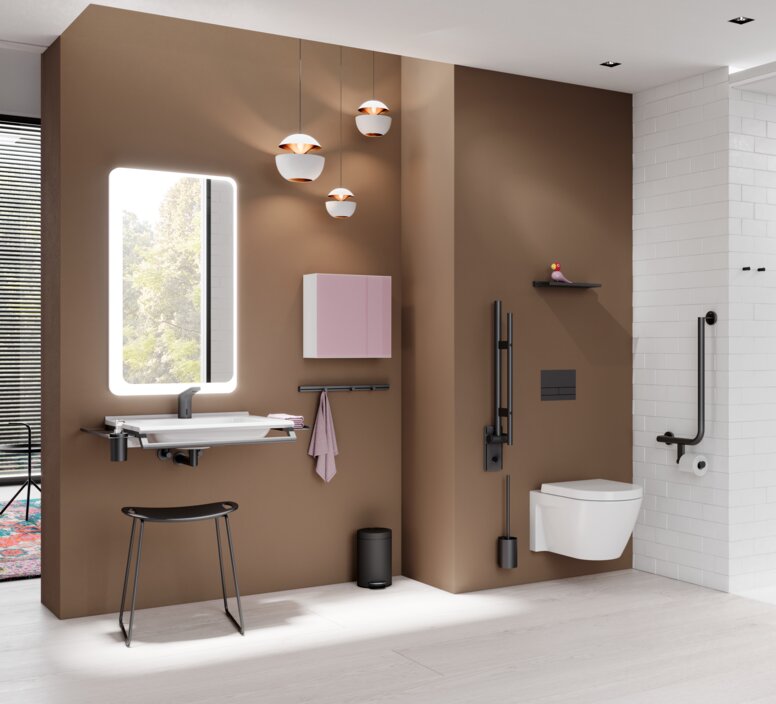
- Sustainable materials: Products and solutions designed for longevity and low environmental impact reflect the growing awareness of ecological responsibility. One example of this is our Re seat family made from post-industrial recyclate. It shows how sustainability and minimalist design can come together to create products that are both tactile and visually appealing.
- Well thought-through lighting: The right lighting and color scheme are crucial for creating a calming atmosphere in a minimalist bathroom. Natural light supplemented by unobtrusive yet functional artificial light sources such as an LED illuminated mirror highlights the aesthetics and emphasizes the purity of the room.
- Flexible storage space solutions: A minimalist design calls for intelligent storage solutions that maximize the space available without compromising on aesthetics. Close cooperation between planners and installers is crucial in order to develop solutions that are both practical and visually appealing.
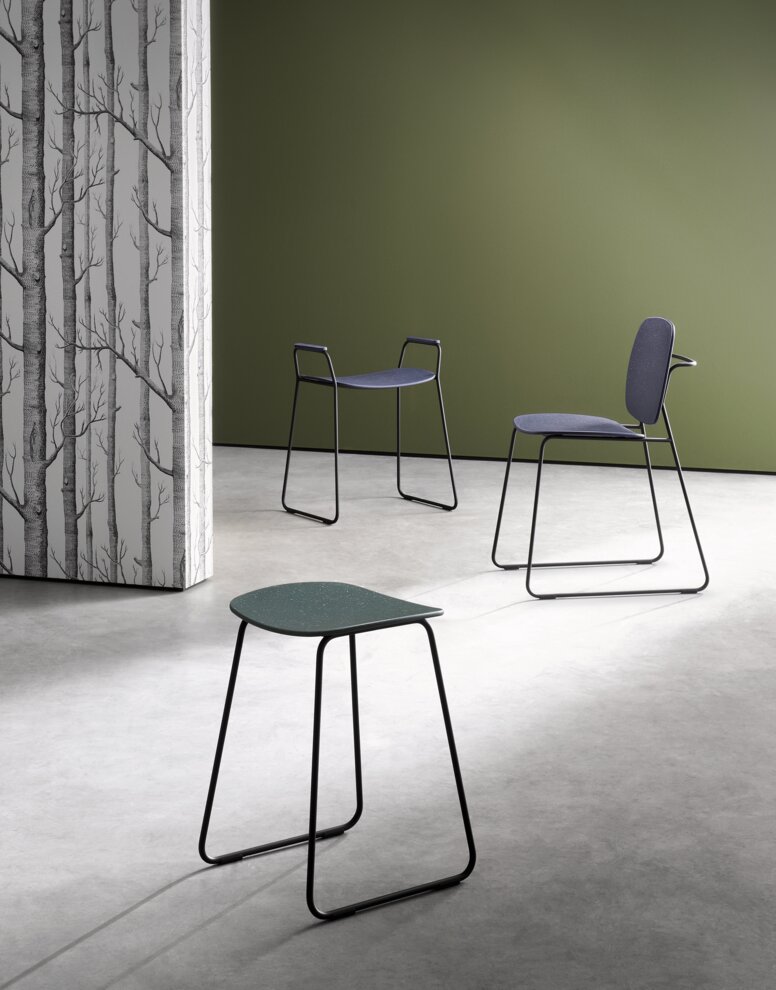
-
Value-added accessories: Of course, accessories also play an important role in the design of a minimalist bathroom. Modern, practical elements such as towel holders, side trolleys, and soap dispensers in a timeless design enhance the modern look without dominating the room. With its portfolio of universal products, HEWI offers a range of accessories that can be combined with all series.
-
Intelligent color design: In terms of color, neutral tones should dominate; they visually enlarge the room and provide brightness. Accessories in contrasting colors can add both depth and sophistication. For example, System 900 from HEWI is available in different colors – from door handles to support rails to paper roll holders and brush sets to the washbasin system.
HEWI requires only the desired color code from around 4,500 possible colors. In this way, unique color concepts that have a personal recognition value are created.
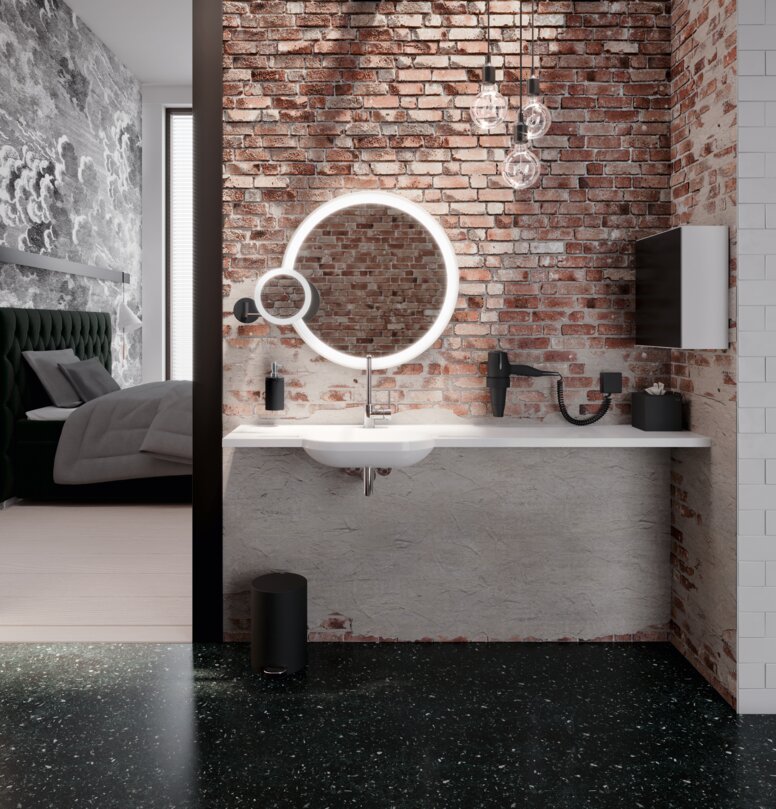
Advantages of inclusive bathrooms with a minimalist approach
Minimalist design goes hand in hand with the idea of accessibility by promoting clear, open spaces that are accessible to people with different needs. By stripping back to the essentials and focusing on wide, unobstructed movement areas, minimalist bathrooms can be designed to be safe and comfortable for users of all ages and abilities. Strategically placed support rails, level-access showers without thresholds, and wheelchair-accessible washbasins are just some of the design decisions that improve both aesthetics and functionality. This conscious integration of accessibility into the minimalist design ensures that beauty and usability are harmonized, thereby making a bathroom not only a place of rest and relaxation but also a safe and welcoming space for everyone.
Integration of smart technology in minimalist bathrooms
Advances in technology offer new opportunities to make minimalist bathrooms both more practical and more environmentally friendly. Touchless, sensor-controlled taps start and stop the water flow with a sweeping hand movement while programmable room temperature controllers take the feel-good factor to a whole new level. Touchless light switches that use motion detection to provide convenient, needs-based and energy-saving lighting control are also practical.
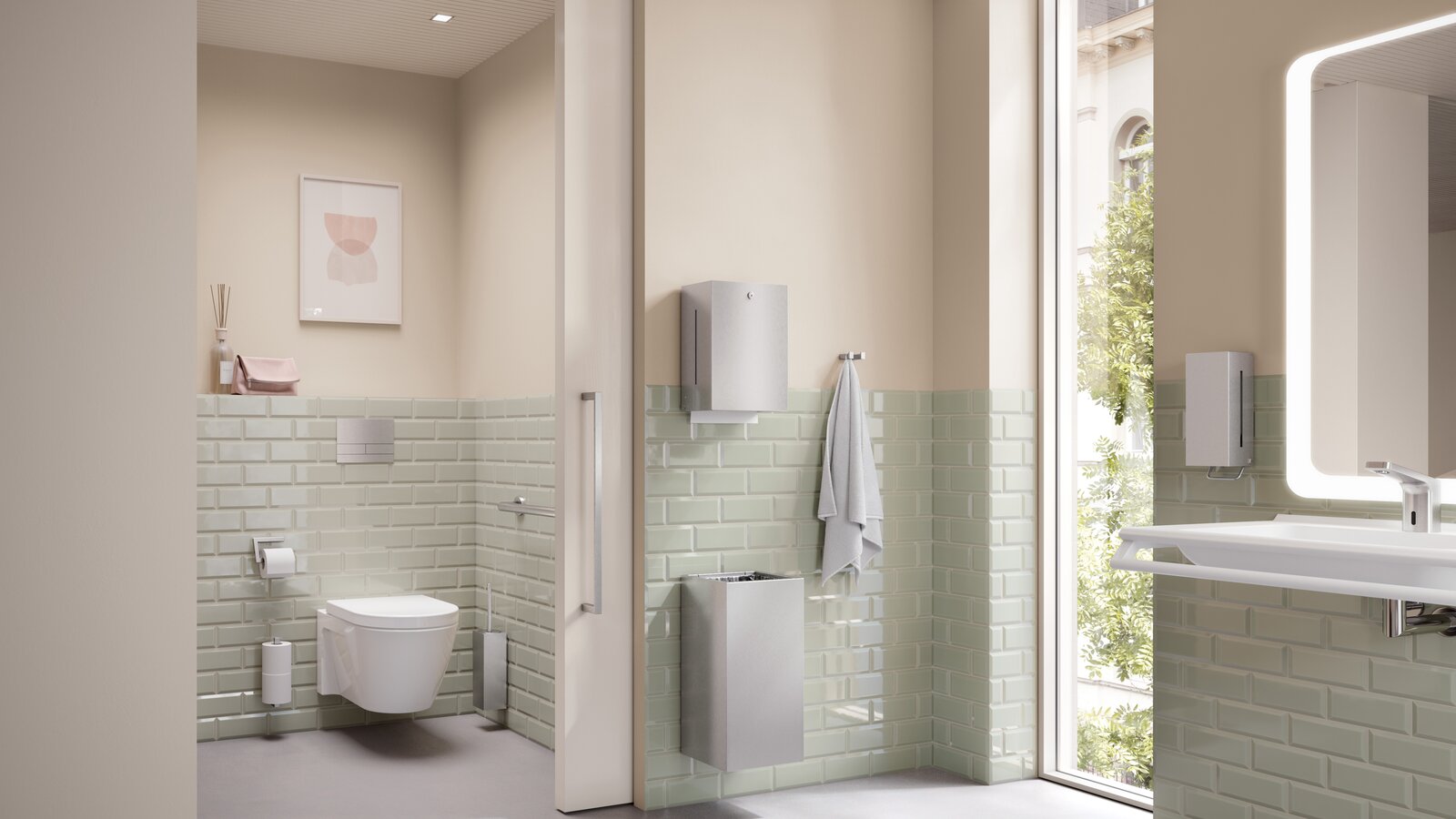
Collaborative planning of functional and aesthetic bathrooms
The development of an accessible and safe bathroom starts with a shared understanding of the needs of different generations. Level-access showers, non-slip floors, and well-positioned support rails are some of the elements that need to be incorporated into the design in order to ensure accessibility.
By working together with foresight and taking these principles into account, architects, planners, and installers can design spaces that are not only aesthetically pleasing but also meet the needs of users and contribute to their well-being. Designing a minimalist bathroom requires more than just a reduction to the essentials. The aim is to create a space that harmonizes elegance, functionality, and modernity supported by a well thought-through selection of materials, colors, and lighting.
WE ARE HAPPY TO SUPPORT YOU!
Do you need support with the implementation of accessible sanitary facilities? On our planning service page, you will find more information about the free service.
